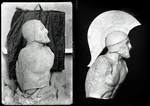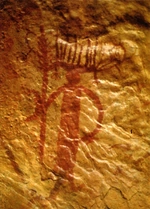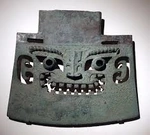This Chapter Devoted To Two Cultures, Babylonia And Persia, Below We Uncover Why
Ordinarity and regularity are not what you expect from us, right? Correct — but please, be respectful of the environment: from coffee cups to baskets, dispose of them properly! (You remember, there was a coffee break...)
As well known, both of the mentioned giant states greatly impacted the Israelite Kingdom, and that is the reason we are turning our view toward them.
The two cultures most deeply interwoven with the later life of the Israelite (Judah) Kingdom shaped its politics, economy, religion, and even its metrology.
Here we will try to give a preview of how their influences layered upon Israel’s destiny — then we will dive into each culture’s specifics, as the deterministic background of their metrology (as we love to do).
🏰 Babylon — The Conqueror and Cultural Imprint
The timeline of the period we are discovering is about 620–539 BCE, under the figures well known to us from school — Nebuchadnezzar II and Nabonidus (unknown? see the link below to learn more: Nebuchadnezzar II, Nabonidus — see more).
The land of Israel was conquered under the direction of these two brave figures, accompanied by Babylonian brutality, through the destruction of Jerusalem (586 BCE) and the First Temple, and the deportation of Judah’s elite. This event didn’t merely shatter statehood — it standardized Israelite knowledge through Babylonian scribal and metric systems.
Some innovations were also imposed upon the Israelite state (the remnants of it, of course). During this time, administrative standardisation took place: Aramaic script and Babylonian accounting tablets infiltrated Judean practices; ‼️ measurement units such as the shekel, mina, and talent became formalized with Babylonian ratio structures (the 60-based sexagesimal logic).
We are sure you’ve heard that the Israelites live with two calendar systems — the modern one (as we all use in our everyday life) and their own national one (more closely tied to Judaic religious tradition). Strictly speaking, this originated from the Babylonian lunisolar time-reckoning system, which replaced local calendars and shaped the evolution of the Hebrew calendar.
🏰 Persia — The Organizer and Restorer
- Timeline of this period is roughly 539–332 BCE. The rulers of the Achaemenid Persian period we discuss include: Cyrus the Great, Darius I, Artaxerxes I.
Impact: the conquest may be scored as mostly positive for the domestic population, including their social stratification (which was, by the way, restored). Cyrus’s decree (539 BCE) allowed Jewish exiles to return and rebuild the Temple — making Persia the first “liberator” power.
Surprisingly, we may find some positives in socio-evolutionary developments. Under the Achaemenid satrapal system, Judah (as Yehud Medinata) became a semi-autonomous province — politically subdued, yet culturally revived.
Of course, standardisation with the metropolitan measurement system was unavoidable under centralized power; as a consequence, Persia unified weights and measures — the Persian daric, siglos, and royal cubit — later absorbed into post-exilic Judean systems.
✏️ Not exactly, but in the spirit of cautious speculation, we may suppose that Zoroastrian dualism subtly influenced later Jewish theological developments, especially eschatology (good vs. evil, afterlife).
✏️ So this mixture of impacts leads us to some conclusions we cannot pass over here. The Judean world that emerged post-exile was a hybrid: Babylonian precision in metrics, astronomy, and trade; Persian bureaucratic order in governance and taxation; Judean theological resilience, transformed but unbroken — a culture surviving conquest through adaptation.
And this description significantly enriches the chapter about the Jewish Kingdom — and, yes, that is not all, which means, you are welcome!
This article is part of a long-read publication. [Go to the full version →]








And here the place we should turning backward, to culture, already passed but under other angle...






